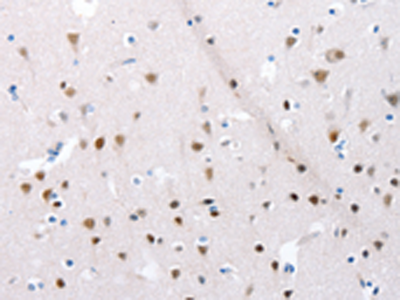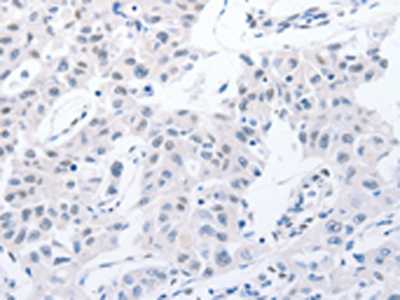| Cat.#: S219926 |
| Product Name: Anti-POMC Rabbit Polyclonal Antibody |
| Synonyms: LPH, MSH, NPP, POC, ACTH, CLIP |
| UNIPROT ID: P01189 (Gene Accession – NP_000930 ) |
| Background: This gene encodes a polypeptide hormone precursor that undergoes extensive, tissue-specific, post-translational processing via cleavage by subtilisin-like enzymes known as prohormone convertases. There are eight potential cleavage sites within the polypeptide precursor and, depending on tissue type and the available convertases, processing may yield as many as ten biologically active peptides involved in diverse cellular functions. The encoded protein is synthesized mainly in corticotroph cells of the anterior pituitary where four cleavage sites are used; adrenocorticotrophin, essential for normal steroidogenesis and the maintenance of normal adrenal weight, and lipotropin beta are the major end products. In other tissues, including the hypothalamus, placenta, and epithelium, all cleavage sites may be used, giving rise to peptides with roles in pain and energy homeostasis, melanocyte stimulation, and immune modulation. These include several distinct melanotropins, lipotropins, and endorphins that are contained within the adrenocorticotrophin and beta-lipotropin peptides. Mutations in this gene have been associated with early onset obesity, adrenal insufficiency, and red hair pigmentation. Alternatively spliced transcript variants encoding the same protein have been described. |
| Immunogen: Synthetic peptide of human POMC |
| Applications: ELISA, WB, IHC |
| Recommended Dilutions: IHC: 15-50;WB: 1000-5000;ELISA: 2000-10000 |
| Host Species: Rabbit |
| Clonality: Rabbit Polyclonal |
| Isotype: Immunogen-specific rabbit IgG |
| Purification: Antigen affinity purification |
| Species Reactivity: Human, Mouse |
| Constituents: PBS (without Mg2+ and Ca2+), pH 7.4, 150 mM NaCl, 0.05% Sodium Azide and 40% glycerol |
| Research Areas: Signal Transduction, Cancer, Metabolism, Neuroscience |
| Storage & Shipping: Store at -20°C. Avoid repeated freezing and thawing |

Immunohistochemistry analysis of paraffin embedded Human brain tissue using 219926(POMC Antibody) at a dilution of 1/30(Nucleus). | 
In comparision with the IHC on the left, the same paraffin-embedded Human brain tissue is first treated with the synthetic peptide and then with 219926(Anti-POMC Antibody) at dilution 1/30. | 
The image on the left is immunohistochemistry of paraffin-embedded Human lung cancer tissue using 219926(Anti-POMC Antibody) at a dilution of 1/30. | 
In comparision with the IHC on the left, the same paraffin-embedded Human lung cancer tissue is first treated with synthetic peptide and then with D260634(Anti-POMC Antibody) at dilution 1/30. | 
Gel: 10%SDS-PAGE, Lysate: 40 μg;
Lane: Human liver cancer tissue;
Primary antibody: 219926(POMC Antibody) at dilution 1/450;
Secondary antibody: Goat anti rabbit IgG at 1/8000 dilution;
Exposure time: 1 minute | |
|















